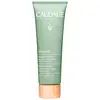What's inside
What's inside
 Key Ingredients
Key Ingredients

 Benefits
Benefits

 Concerns
Concerns

 Ingredients Side-by-side
Ingredients Side-by-side

Water
Skin ConditioningCaprylic/Capric Triglyceride
MaskingGlycerin
HumectantButylene Glycol
HumectantPentaerythrityl Distearate
EmulsifyingShea Butter Ethyl Esters
EmollientCetearyl Olivate
Phenoxyethanol
PreservativeBenzyl Alcohol
PerfumingSorbitan Olivate
EmulsifyingAcrylates/C10-30 Alkyl Acrylate Crosspolymer
Emulsion StabilisingSodium Hydroxide
BufferingSodium Hyaluronate
HumectantSodium Stearoyl Glutamate
CleansingCopernicia Cerifera Cera
EmollientPropanediol
SolventGlycogen
HumectantSodium Gluconate
Skin ConditioningRetinol
Skin ConditioningPolysorbate 20
EmulsifyingEthylhexylglycerin
Skin ConditioningDehydroacetic Acid
PreservativeCitric Acid
BufferingHelianthus Annuus Seed Oil
Emollient1,2-Hexanediol
Skin ConditioningCaprylyl Glycol
EmollientDisodium Cocoamphodiacetate
CleansingTocopherol
AntioxidantXanthan Gum
EmulsifyingEthyl Ferulate
AntioxidantHumulus Lupulus Extract
AntimicrobialWater, Caprylic/Capric Triglyceride, Glycerin, Butylene Glycol, Pentaerythrityl Distearate, Shea Butter Ethyl Esters, Cetearyl Olivate, Phenoxyethanol, Benzyl Alcohol, Sorbitan Olivate, Acrylates/C10-30 Alkyl Acrylate Crosspolymer, Sodium Hydroxide, Sodium Hyaluronate, Sodium Stearoyl Glutamate, Copernicia Cerifera Cera, Propanediol, Glycogen, Sodium Gluconate, Retinol, Polysorbate 20, Ethylhexylglycerin, Dehydroacetic Acid, Citric Acid, Helianthus Annuus Seed Oil, 1,2-Hexanediol, Caprylyl Glycol, Disodium Cocoamphodiacetate, Tocopherol, Xanthan Gum, Ethyl Ferulate, Humulus Lupulus Extract
Water
Skin ConditioningIllite
AbrasiveBentonite
AbsorbentGlycerin
HumectantVitis Vinifera Fruit Water
Skin ConditioningAcacia Senegal Gum
MaskingZinc PCA
HumectantSoy Acid
EmollientLavandula Angustifolia Oil
MaskingLinalool
PerfumingLimonene
PerfumingCitric Acid
BufferingSodium Benzoate
MaskingCupressus Sempervirens Oil
MaskingSalvia Sclarea Oil
MaskingPotassium Sorbate
PreservativeCommiphora Myrrha Oil
MaskingSantalum Album Oil
MaskingAnthemis Nobilis Flower Oil
MaskingWater, Illite, Bentonite, Glycerin, Vitis Vinifera Fruit Water, Acacia Senegal Gum, Zinc PCA, Soy Acid, Lavandula Angustifolia Oil, Linalool, Limonene, Citric Acid, Sodium Benzoate, Cupressus Sempervirens Oil, Salvia Sclarea Oil, Potassium Sorbate, Commiphora Myrrha Oil, Santalum Album Oil, Anthemis Nobilis Flower Oil
 Reviews
Reviews

Ingredients Explained
These ingredients are found in both products.
Ingredients higher up in an ingredient list are typically present in a larger amount.
Citric Acid is an alpha hydroxy acid (AHA) naturally found in citrus fruits like oranges, lemons, and limes.
Like other AHAs, citric acid can exfoliate skin by breaking down the bonds that hold dead skin cells together. This helps reveal smoother and brighter skin underneath.
However, this exfoliating effect only happens at high concentrations (20%) which can be hard to find in cosmetic products.
Due to this, citric acid is usually included in small amounts as a pH adjuster. This helps keep products slightly more acidic and compatible with skin's natural pH.
In skincare formulas, citric acid can:
While it can provide some skin benefits, research shows lactic acid and glycolic acid are generally more effective and less irritating exfoliants.
Most citric acid used in skincare today is made by fermenting sugars (usually from molasses). This synthetic version is identical to the natural citrus form but easier to stabilize and use in formulations.
Read more about some other popular AHA's here:
Learn more about Citric AcidGlycerin is already naturally found in your skin. It helps moisturize and protect your skin.
A study from 2016 found glycerin to be more effective as a humectant than AHAs and hyaluronic acid.
As a humectant, it helps the skin stay hydrated by pulling moisture to your skin. The low molecular weight of glycerin allows it to pull moisture into the deeper layers of your skin.
Hydrated skin improves your skin barrier; Your skin barrier helps protect against irritants and bacteria.
Glycerin has also been found to have antimicrobial and antiviral properties. Due to these properties, glycerin is often used in wound and burn treatments.
In cosmetics, glycerin is usually derived from plants such as soybean or palm. However, it can also be sourced from animals, such as tallow or animal fat.
This ingredient is organic, colorless, odorless, and non-toxic.
Glycerin is the name for this ingredient in American English. British English uses Glycerol/Glycerine.
Learn more about GlycerinWater. It's the most common cosmetic ingredient of all. You'll usually see it at the top of ingredient lists, meaning that it makes up the largest part of the product.
So why is it so popular? Water most often acts as a solvent - this means that it helps dissolve other ingredients into the formulation.
You'll also recognize water as that liquid we all need to stay alive. If you see this, drink a glass of water. Stay hydrated!
Learn more about Water